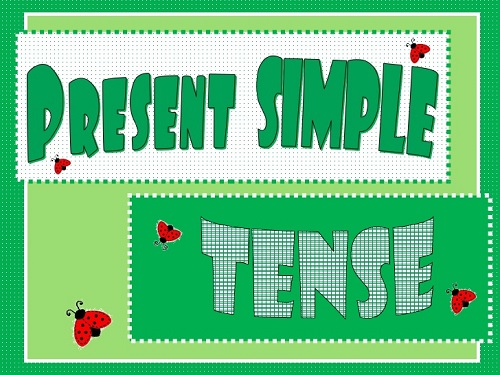THÌ HIỆN TẠI ĐƠN – THE PRESENT SIMPLE TENSE
Present simple tense – Thì hiện tại đơn, cũng đơn giản như tên gọi, đây là thì đầu tiên trong các thì của tiếng Anh mà chúng ta được học ở trường lớp. Hãy cùng mình một lần nữa phân tích lại thì hiện tại đơn này nhé, biết đâu các bạn lại ngộ ra điều gì đó thú vị mà lúc trước đã bỏ qua thì sao. Bắt đầu nhé.
THÌ HIỆN TẠI ĐƠN – THE PRESENT SIMPLE TENSE
The simple present tense is a verb tense and has two main uses. First, we use this tense to describe an action happening at the time of saying, or one that happens unceasingly – present indefinite. In addition, it depends on whether the subject of a sentence is singular or plural that the simple present tense is structured by utilizing the infinitive verb or by adding the plural ending –s or –es.
Thì hiện tại đơn là một thì động từ và có hai cách dùng. Đầu tiên, chúng ta sử dụng thì hiện tại đơn để miêu tả một hành động xảy ra ngay tại thời điểm nói chuyện, hoặc một hành động thường xuyên xảy ra – còn được gọi là hiện tại không xác định. Ngoài ra, tuỳ vào chủ ngữ số ít hay số nhiều mà người ta chia động từ thì hiện tại đơn ở thể nguyên mẫu hoặc thêm đuôi số nhiều là –s hoặc –es.

For example: I call her every single night, but she still ignores me
And the other is to describe a habitual action or occurrence.
Và chúng ta cũng sử dụng thì hiện tại đơn để miêu tả hành động theo thói quen hoặc lặp đi lặp lại.
For instance: I often text Miley before going to sleep, and I also text her every time I wake up. We frequently send messages to each other.
- How the simple present tense is formed – Cách chia thì hiện tại đơn
In this simple present tense, most regular verbs are conjugated with the infinitive or root form, excluded in the third-person singular which ends in –s.
Trong thì hiện tại đơn này, hầu hết các động từ thường gặp được chia ở thể nguyên mẫu không thay đổi, ngoại trừ khi chia trong câu có chủ ngữ ngôi thứ ba số ít, chúng ta thêm đuôi –s.
- First-person singular (Chủ ngữ ngôi thứ nhất số ít): I love
- Second-person singular (Chủ ngữ ngôi thứ hai số ít): You love
- Third-person singular (Chủ ngữ ngôi thứ ba số ít): He/she/it loves (note the –s)
- First-person plural (Chủ ngữ ngôi thứ nhất số nhiều): We love
- Second-person plural (Chủ ngữ ngôi thứ hai số nhiều): You love
- Third-person plural (Chủ ngữ ngôi thứ ba số nhiều): They write
However, for some verbs, the third-person singular often ends with the –es instead of –s. In typical, these verbs have the final letters like o, ch, sh, th, ss, gh, or z.
Tuy nhiên, trong câu có chủ ngữ ngôi thứ ba số it, một số động từ được chia với đuôi –es. Và những động từ này thường kết thúc bằng đuôi o, ch, th, ss, gh, hoặc z.
For example:
- First-person singular (Chủ ngữ ngôi thứ nhất số ít): I go
- Second-person singular (Chủ ngữ ngôi thứ hai số ít): You go
- Third-person singular (Chủ ngữ ngôi thứ ba số ít): He/she/it goes
- First-person plural (Chủ ngữ ngôi thứ nhất số nhiều): We go
- Second-person plural (Chủ ngữ ngôi thứ hai số nhiều): You go
- Third-person plural (Chủ ngữ ngôi thứ ba số nhiều): They go
- I like apples. My boyfriend likes oranges.
- The bus comes in 15 minutes. The trains come every hour.
- We read the newspaper every day. The old man only reads the comics.
- We are friends. We’re also classmates.
- You are late for dinner. You’re hungry.
- They are delicious cookies. They’re sugary too.
- How to Make the Simple Present Tense Negative – Chia thì hiện tại ở thể phủ định
For making a simple present verb negative, the formula is – Công thức chia thì hiện tại đơn ở thể phủ định:
- To be: S + am/is/are + NOT + O
- Regular verb: S + do/does + NOT + V _ inf
For example:
- My little Donna really love apple pies and she does not/ doesn’t want to share hers at all.
- After what you have just said, I think that I do not/ don’t want to talk with you anymore.
- No, I am not angry.
- No, he is not from London.
- No, we are not students.
- How to Ask a Question with the simple present tense – Cách chia thì hiện tại đơn ở thể nghi vấn
For asking a question in the simple present tense, the formula is – công thức chia thì hiện tại đơn ở dạng nghi vấn:
- To be: Am/is/are + S + O?
- Regular verb: Do/Does + S + V _ inf?
Xem thêm: Những động từ bất quy tắc trong tiếng anh
For example:
- Are you from China? No, I’m not. (You cannot say: No, I amn’t)
- Is it Saturday? No, it isn’t. / No, it isn’t Saturday.
- Are we late for the bus? No, we aren’t / No, we aren’t late.
- When do you study English?
- How often does he eat pizza?
- Where does your mother live?






















